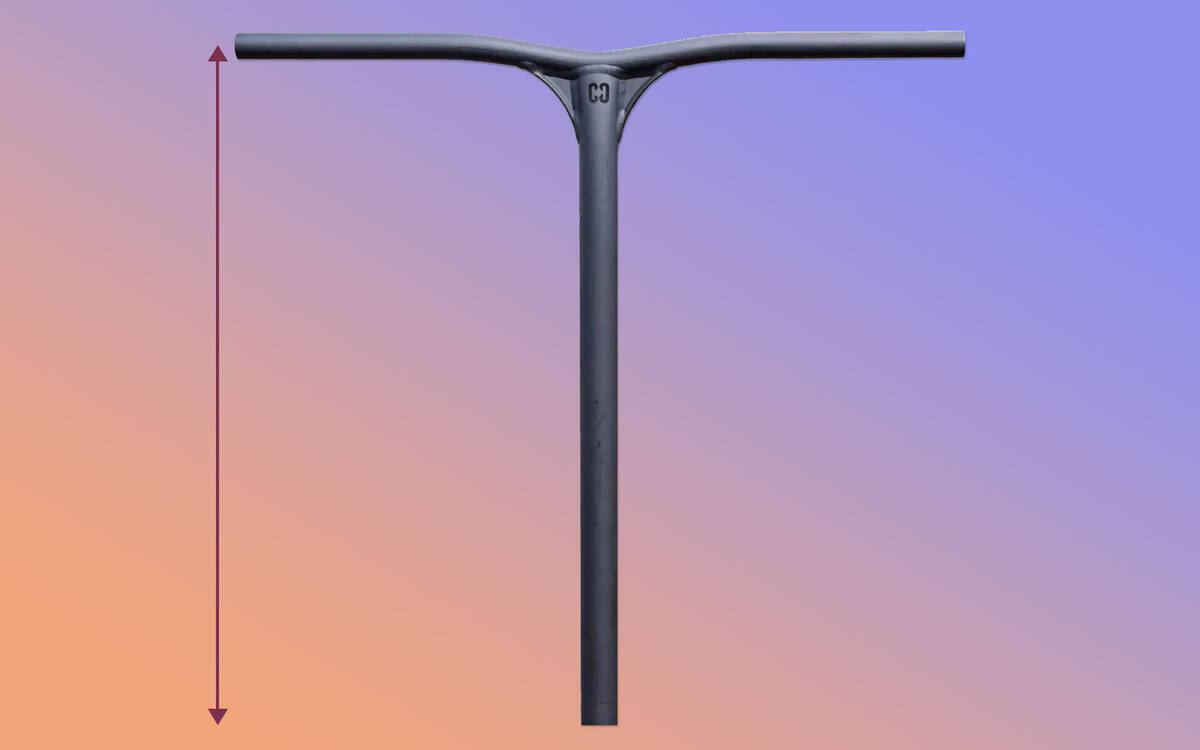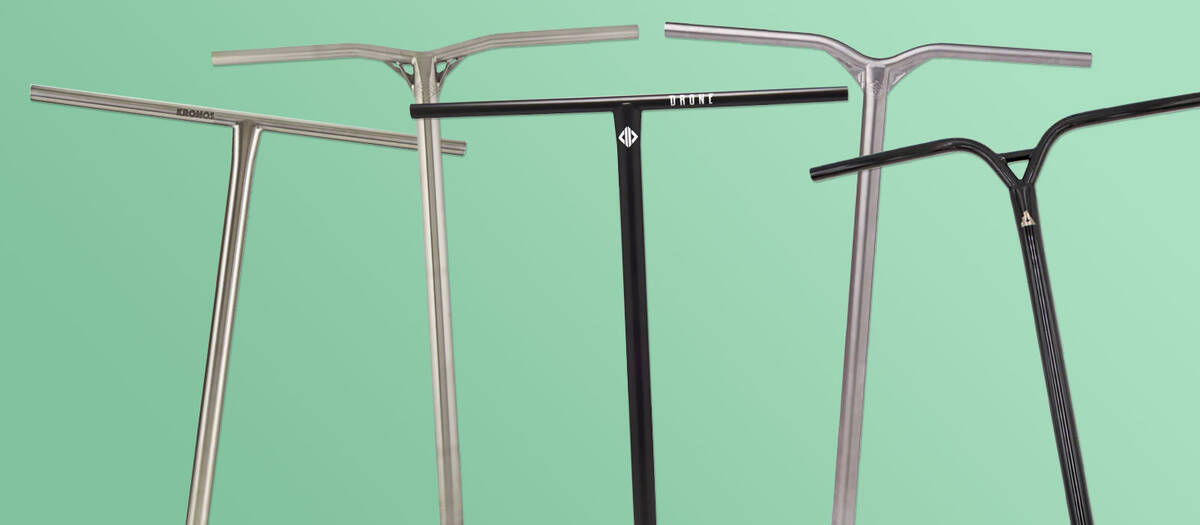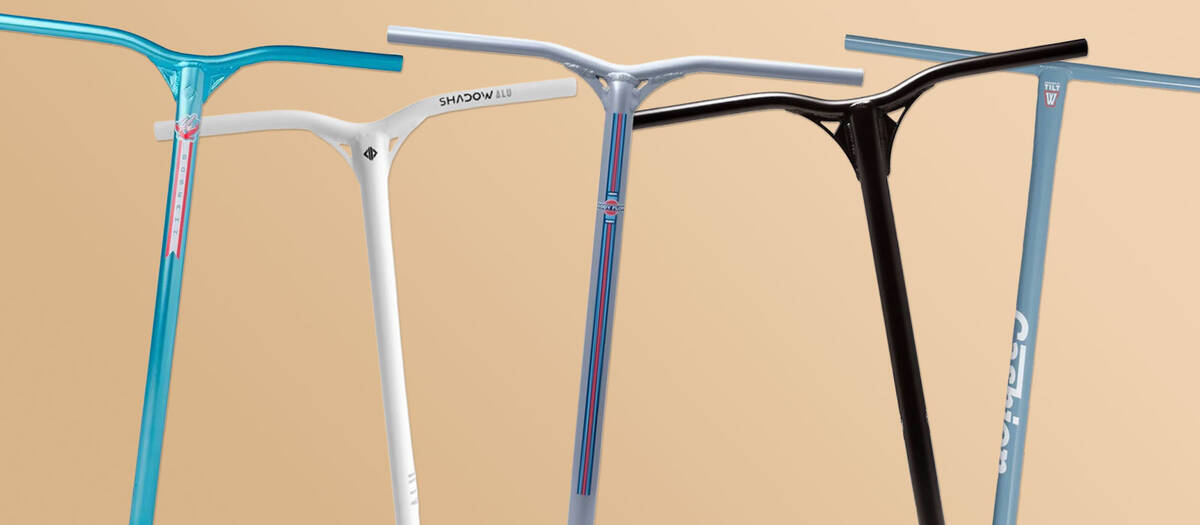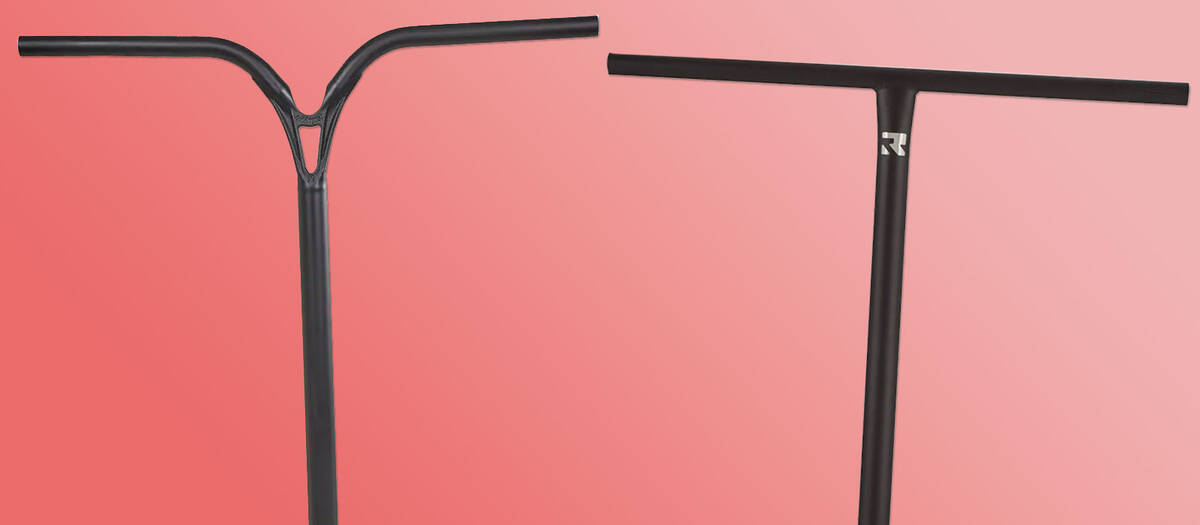Guide to Purchasing Pro Scooter Bars
This guide will address your questions before acquiring a new pro scooter bar, covering important aspects such as bar height, compatibility, and material. Prepare to enhance your scooter with the optimal bar available!
Overview
Overview
Selecting the Appropriate Scooter Bar Height

The height of pro scooter bars significantly impacts the choice of bar due to its influence on both riding style and comfort. Therefore, placing emphasis on selecting the correct bar height is advisable.
Initially, deciding on bar height leans towards personal taste. For beginners without established preferences, certain guidelines can facilitate the choice of an appropriate bar height.
What is the recommended height for scooter bars? Ideally, pro scooter bars should extend between your hips and navel when standing on the ground with the scooter deck between your feet. This height offers comfort and optimum leverage for trick execution. At this height, riders can maintain a straight back while still having sufficient leverage. For beginners undecided between two heights within the suggested range, we recommend opting for the taller choice to generally provide superior control.
If you're contemplating adjusting the size of your scooter bars—or uncertain between choosing a taller or shorter bar configuration—this table might prove beneficial.
| Aspect | Taller Bars | Shorter Bars |
|---|---|---|
| Comfort | Reduces back strain due to more upright posture | Necessitates leaning forward, potentially increasing back strain |
| Tricks | Enhanced control for grinds and manuals | Increased control for airborne manoeuvres |
| Stability | Greater stability | Higher agility and responsiveness |
| Style | Typically associated with street | Typically associated with park |
Determining Scooter Bar Height
The height of scooter bars is generally specified in the product details when buying. Nevertheless, this figure alone doesn’t suffice to ascertain the exact height of the complete scooter after mounting the bar.
To obtain the full height of your scooter with the new bar, measure from the base of the front wheel to the point where the bottom of the scooter bar will rest once mounted. The location of this point varies according to your scooter's compression system.
Instructions for measuring the overall scooter height:
- SCS: Measure from the base of the front wheel to the midpoint of the clamp. Add this to the bar height for the total scooter height.
- HIC/IHC/ICS: Measure from the base of the front wheel to the clamp’s bottom. Add this to the bar height for the total scooter height with the new bar.
If further information is needed, we’re here to assist. Below are a few helpful links:
Choosing the Correct Width for Scooter Bars

Your scooter bar’s width should align with your shoulder width. Measure shoulder to shoulder and add an inch or two to find a width that is comfortable. Bars that are excessively narrow may appear awkward and cause discomfort in your wrists and shoulders. Conversely, overly wide bars can impede certain trick executions, and having distant hand placements may render them uncomfortable for shoulders and wrists alike.
When deciding on narrower or wider scooter bars, consider these aspects:
- Wider bars: Increased stability and catch ease
- Narrower bars: Enhanced agility and spin capability
Scooter Bar Diameter: Oversized Versus Standard

Scooter bar diameters are classified as either standard or oversized:
- Standard: 32 mm outer diameter / 28 mm inner diameter
- Mix: 35 mm outer diameter / 28 mm inner diameter (common with aluminium bars)
- Oversized: 35 mm outer diameter / 32 mm inner diameter
The contrast between standard and oversized scooter bars primarily lies in weight and strength. Oversized bars generally exhibit greater strength and weight, whereas standard bars are lighter yet less robust.
Aluminium bars present an exception since they require additional material for robustness under intense usage. Most aluminium bars feature a 35 mm outer diameter and a standard 28 mm inner diameter.
Ensuring Compatibility of Scooter Bars
Selecting a new scooter bar requires confirming its compatibility with your current setup. Evaluate the bar's specifications to check its compression system support.
- If utilising an SCS setup, ensure the bar lacks a slit. An SCS adapter can be employed for slits.
- If using a standard size SCS clamp, the bar should have a standard outer diameter.
- If an oversized SCS clamp is in use and you prefer a standard size SCS bar, be sure to use a suitable SCS clamp shim.
|
Compression System |
Standard Bars 32 mm outer diameter 28 mm inner diameter |
Oversized Bars
35 mm outer diameter 32 mm inner diameter |
Aluminium Bars 35 mm outer diameter 28 mm inner diameter |
|---|---|---|---|
|
SCS Scooter Bars |
Compatible if:
|
Compatible if:
|
Compatible if:
|
|
HIC Scooter Bars |
NOT COMPATIBLE |
Compatible if:
|
NOT COMPATIBLE |
|
IHC Scooter Bars |
Compatible if:
|
NOT COMPATIBLE |
Compatible if:
|
If your SCS setup is met with a slit-containing bar, consider purchasing an SCS Sleeve (or SCS Bar Adapter) from our Scooter Compression category. Numerous HIC or IHC bars come with an SCS adapter. Find them here:
Our resources are abundant in guides pertinent to pro scooter compression and the compatibility of different parts. They answer your queries thoroughly:
Introduction to Titanium Scooter Bars

Titanium bars are renowned for combining the lightweight nature of aluminium with the robustness of steel, thus becoming favoured by seasoned scooter riders. Investing in titanium bars may be mainly due to their excellent strength-to-weight ratio. There’s little concern for bar breakage during extreme sessions, and their lightness enhances performance.
Compared to chromoly and aluminium, titanium incurs additional costs due to its remarkable strength and properties, which demand more resources during production. Consequently, titanium bars tend to command a higher price.
Riders new to titanium may be startled by how the bars flex. Although it may require an adjustment period, this flexing can ultimately improve one's riding style. As familiarity increases, the flex's advantage becomes apparent, absorbing impacts transmitted through the bar during intense landings.
A distinct feature of titanium bars compared to steel or aluminium is their propensity to snap rather than degrade and bend with age. If signs of wear appear on titanium bars (generally after extensive use), replacing them is recommended.
Advantages:- Durable
- Lightweight
- Flexibility
- Expensive
- Flexibility (not universally liked)
- Prone to snapping with eventual failure.
To view our full range of titanium bars, filter our bar selection by material:
Introduction to Aluminium Scooter Bars

Aluminium pro scooter bars are appreciated for being light, making them ideal for riders prioritising nimbleness and agility. The lightweight quality of aluminium bars aids in performing sophisticated aerial tricks and manoeuvres. Moreover, being budget-friendly, aluminium options suit those in search of trick-compatible bars.
Nevertheless, the limited strength of aluminium bars is a disadvantage, as they are more vulnerable to bending or breaking compared to steel or titanium. To counterbalance this weakness, aluminium bars frequently feature strengthening components such as gussets or wedges where the bars are welded, enhancing structural integrity.
Advantages:- Lightweight
- Economical
- Not as durable
- Stiff / lacking flexibility
If you want to explore our range of aluminium bars, filter the category by material:
Chromoly Scooter Bars

Steel pro scooter bars, also referred to as chromoly bars, are renowned for their exceptional durability and cost-effectiveness. However, they tend to be heavier than bars made from alternative materials..
In contrast to aluminium bars, which frequently use gussets or Y-shapes for added support, chromoly bars can be produced in genuine T-shapes thanks to the material's natural strength.
Steel bars are often favoured in street configurations, even by professional pro scooter athletes. Not all riders prioritise ultra-lightweight setups, so whether you're just starting or a seasoned professional, chromoly pro scooter bars provide a dependable option to consider!
To minimise excess weight, some chromoly scooter bars implement butted tubing. This indicates that specific sections of the bars have thinner tubing to lower overall weight while preserving strength. Chromoly bars are ideal for beginners, and a chromoly bar can be found to suit every compression system.
Pros:- Durable
- Strong
- Affordable
- T-shape
- Heavy
Visit our scooter bars selection and filter by material to view all our chromoly pro scooter bars:
Choosing Between Y-Bars and T-Bars for Pro Scooters

T-bars and Y-bars derive their names from their unique configurations. Deciding between them ultimately depends on personal preference, as neither holds an advantage over the other.
T-bars generally have a reputation for being slightly weaker due to the absence of gussets or braces to strengthen the connection between the handlebars and the down tube. Therefore, T-shaped bars are often manufactured from steel or titanium.
Conversely, Y-bars are equipped with reinforcements, providing them with extra strength. Consequently, aluminium bars are frequently crafted in a Y-shape.
The choice of T-bars or Y-bars often hinges on several factors, such as aesthetics, personal preference based on feel during use, and alignment with a particular style or identity as a scooter rider. Both designs come with their respective benefits, catering to diverse rider preferences.
Backsweep & Upsweep
Backsweep describes the handlebar's angle towards the rider, while upsweep pertains to the bar's upward angle. These features greatly influence a scooter's ergonomics, ensuring a more relaxed and natural wrist position.
Backsweep and upsweep are commonly associated with Y-shaped bars, whereas T-shaped pro scooter bars are characterised by their simplicity and straightforward design.
Explore all our exciting Y- and T-shaped bars:
